
Dayr alBahri Middle Kingdom, Mortuary Temple, Hatshepsut, Map
In the Dayr al-Bahri complex, one part is dedicated to the god Amun, built by King Thutmose III. The Hathor chapel at the temple built by Thutmose III. According to historians, this temple, which was discovered in 1961, was used for the beautiful festivals of the valley. In the later Twentieth Dynasty, it was severely damaged, and since then.
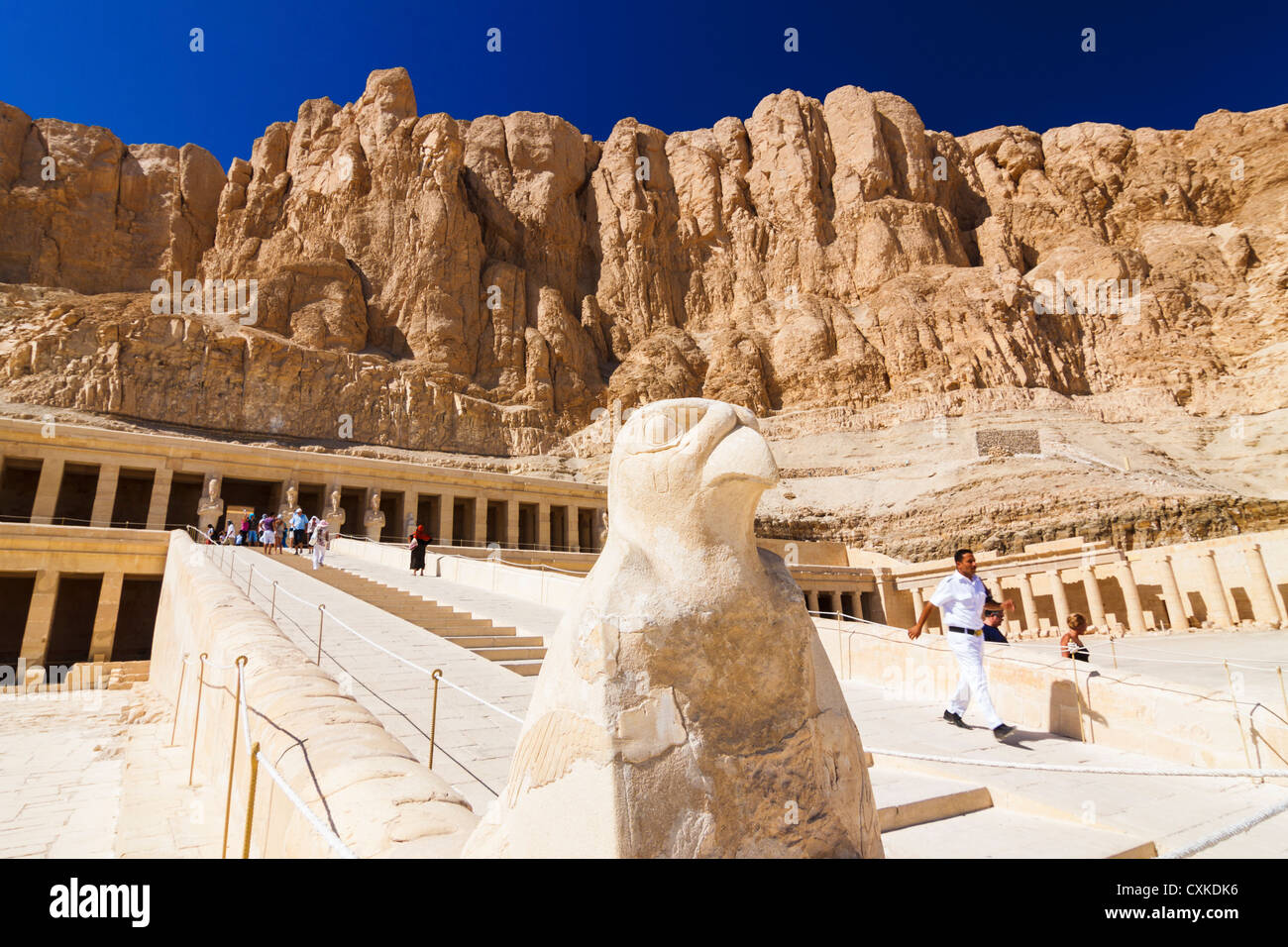
Deir alBahri, Hatshepsut Temple with Falcon God Horus statue in
Later pharaohs destroyed all images of Hatshepsut in the temple, as well as her other monuments, yet it remains one of the most enduring and beautiful ancient sites in Egypt. Image: Deir-el-Bahri with Hatsheptut's Temple, Temple of Thutmoses III and Mentuhotep II, West Thebes, Egypt. Taken by Nowic (Wikimedia). David, Anthony and Rosalie.

Deir el bahri, Luxor, Ancient Egpyt Egypt travel, Ancient egypt, Egypt
The Deir el-Bahri Temple Complex (also spelled Deir el-Bahari) includes one of the most beautiful temples in Egypt, perhaps in the world, built by the architects of the New Kingdom Pharaoh Hatshepsut in the 15th century BC. The three colonnaded terraces of this lovely structure were built within a steep half-circle of cliffs on the west bank of the Nile River, guarding the entrance to the.

Egypt, Ancient Thebes, Dayr alBahri, Valley of the Kings, Temple of
Deir El-Bahri: Ancient Egypt's Most Iconic Temple. Deir el Bahri is one of the most fascinating ancient Egyptian temples. Join us on a tour and discover its long-buried secrets.

Deir el Bahri Temple Stock Image E905/0257 Science Photo Library
The Mortuary Temple of Hatshepsut at Deir el-Bahri. Important Theban religious and funerary site on the west bank of the Nile, opposite Luxor, comprising temples and tombs dating from the early Middle Kingdom to the Ptolemaic period.
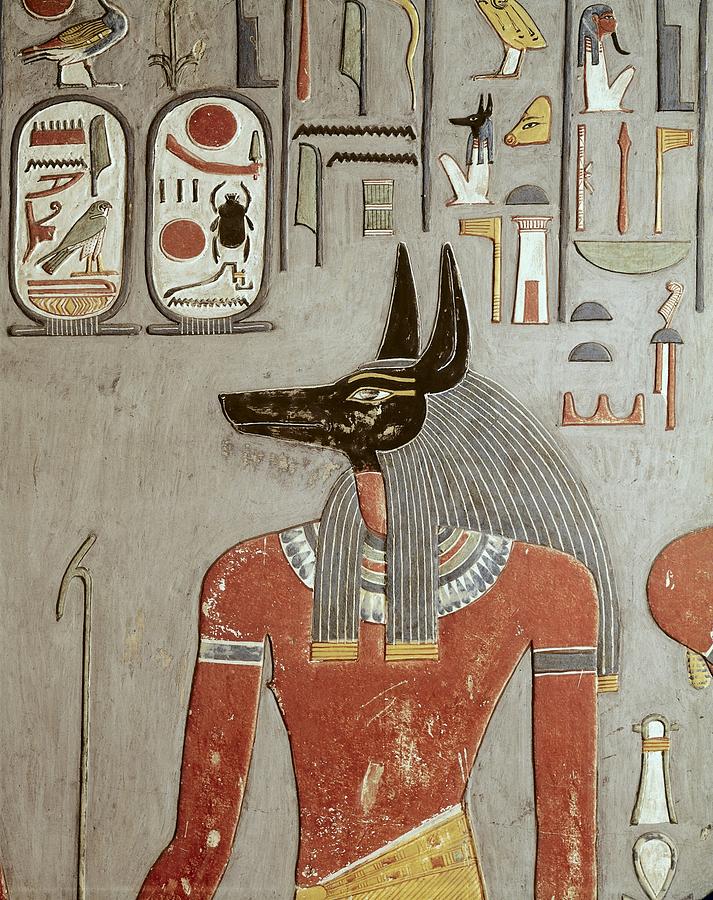
Egypt. Dayr Albahri. Valley Photograph by Everett Fine Art America
Deir el-Bahari or Dayr al-Bahri (Arabic: الدير البحري, romanized: al-Dayr al-Baḥrī, lit. 'the Monastery of the North', Coptic: ⲡⲧⲟⲡⲟⲥ ⲛⲁⲡⲁ ⲫⲟⲓⲃⲁⲙⲙⲱⲛ, lit. 'the monastery of Apa Phoibammon', Ancient Egyptian: djeser-djeseru) is a complex of mortuary temples and tombs located on the west bank of the Nile, opposite the city of Luxor, Egypt.

Deir elBahari or Dayr alBahri, the mortuary temple of Hatshepsut
ancient Egypt. Thebes. Dayr al-Baḥrī, Egyptian archaeological site in the necropolis of Thebes. It is made up of a bay in the cliffs on the west bank of the Nile River east of the Valley of the Kings. Its name (Arabic for "northern monastery") refers to a monastery built there in the 7th century ce. Of the three ancient Egyptian.

Mortuary temple of Queen Hatshepsut, Dayr alBahri, Egypt, c1457 BC
The Temple of Hatshepsut at Deir El Bahri. The Temple of Hatshepsut is not only a memorial temple that honors Queen Hatshepsut, it is also one of the greatest Egyptian architectural achievements. Designed by Senenmut (Hatshepsut's steward and architect), this mortuary temple closely resembles the classical Greek architecture of 1,000 years later.
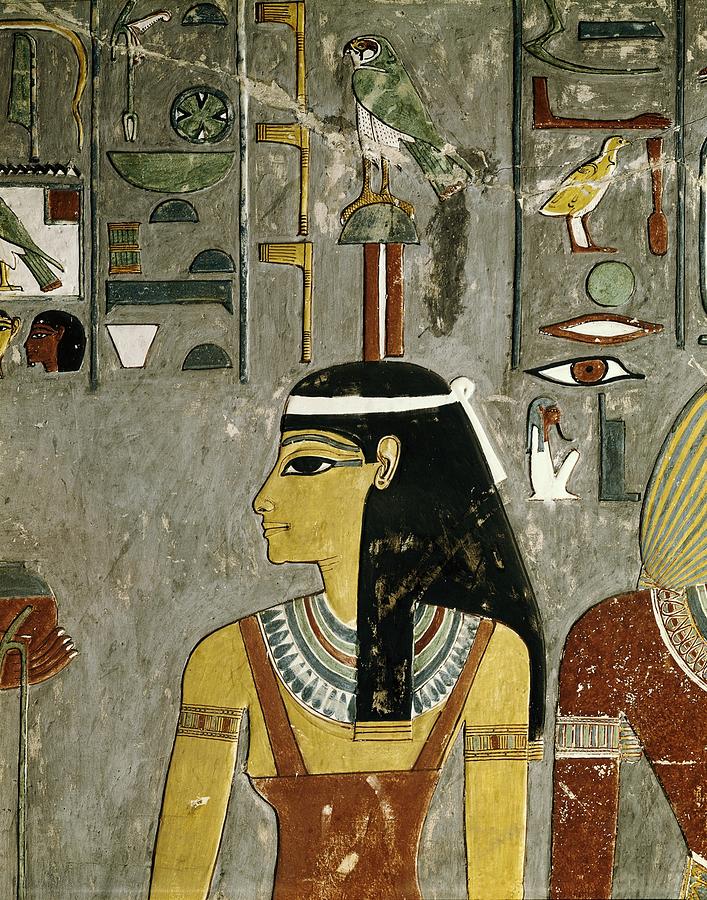
Egypt. Dayr Albahri. Valley Photograph by Everett Fine Art America
Deir el-Bahri (Arabic for "The Northern Monastery") is a complex of mortuary temples and tombs located on the west bank of the Nile. It is separated from the Valley of the Kings by the peak of el-Qurn (Arabic for "The Horn" known to the Egyptians as "Dehent") and lies directly across the water from the temple complexes at Karnak and Luxor in Thebes.

The Temple of Deir ElBahri is one of the most characteristic temples
Mortuary temple of Hatshepsut. / 25.738278°N 32.606583°E / 25.738278; 32.606583. The mortuary temple of Hatshepsut ( Egyptian: Ḏsr-ḏsrw meaning "Holy of Holies") is a mortuary temple built during the reign of Pharaoh Hatshepsut of the Eighteenth Dynasty of Egypt. [b] Located opposite the city of Luxor, it is considered to be a.
/Djeser-Djeseru-5910663e3df78c9283cb6375.jpg)
Pharaoh Hatshepsut's Deir elBahri Temple in Egypt
Deir el-Bahari. By the Editors of the Madain Project. The Deir el-Bahari (الدير البحري) al-Dayr al-Baḥrī "the Monastery of the North" is a complex of mortuary temples and tombs located on the west bank of the Nile, opposite the city of Luxor, Egypt. This is a part of the Theban Necropolis.
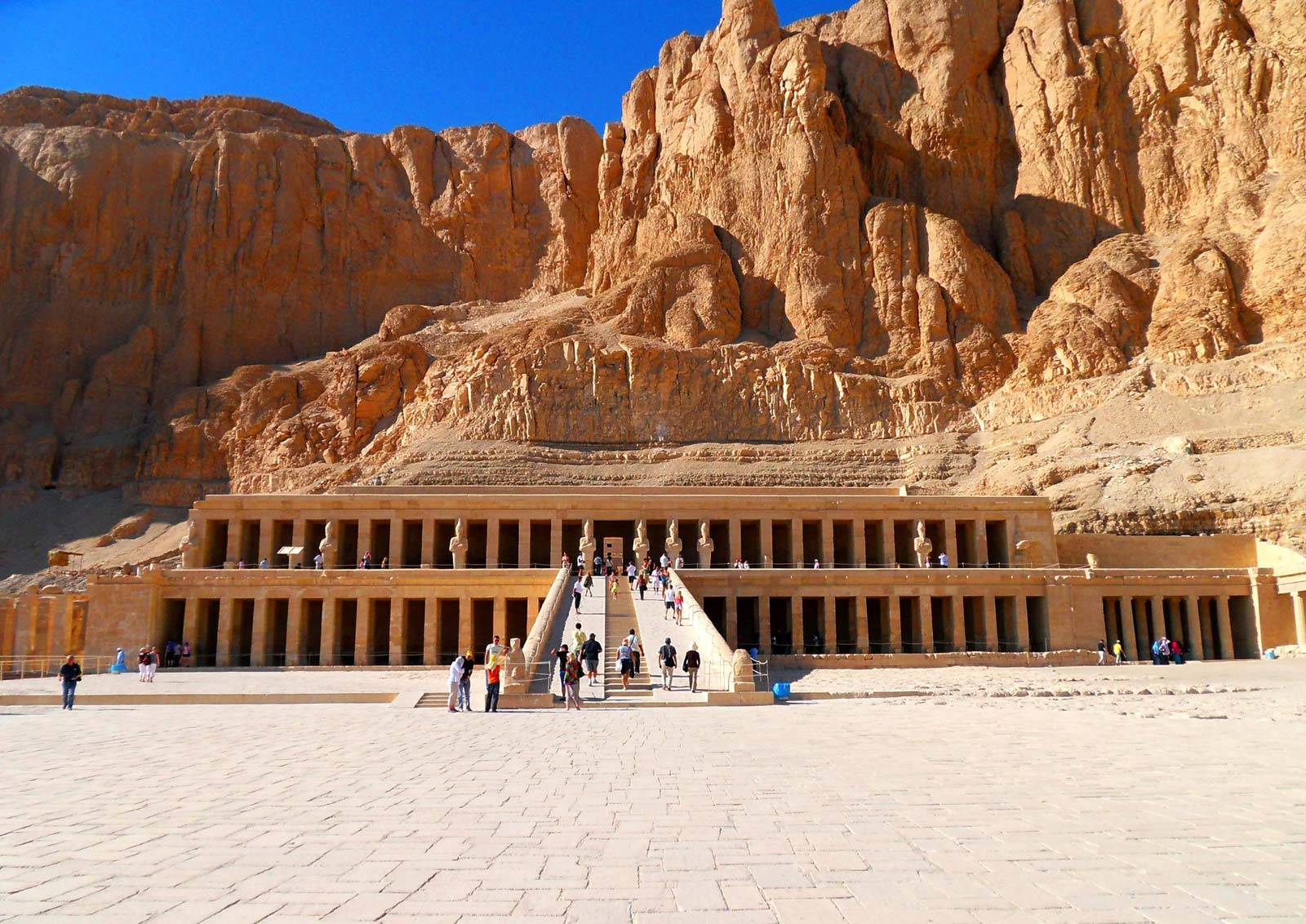
Queen Hatshepsut Tour Cairo / Luxor / Cairo 05 Nights Deluxe Travel
Deir el-Bahari or Dayr al-Bahri ( Arabic: الدير البحري, romanized: al-Dayr al-Baḥrī, lit. 'the Monastery of the North', Coptic: ⲡⲧⲟⲡⲟⲥ ⲛⲁⲡⲁ ⲫⲟⲓⲃⲁⲙⲙⲱⲛ, lit. 'the monastery of Apa Phoibammon', Ancient Egyptian: djeser-djeseru) is a complex of mortuary temples and tombs located on the west bank.
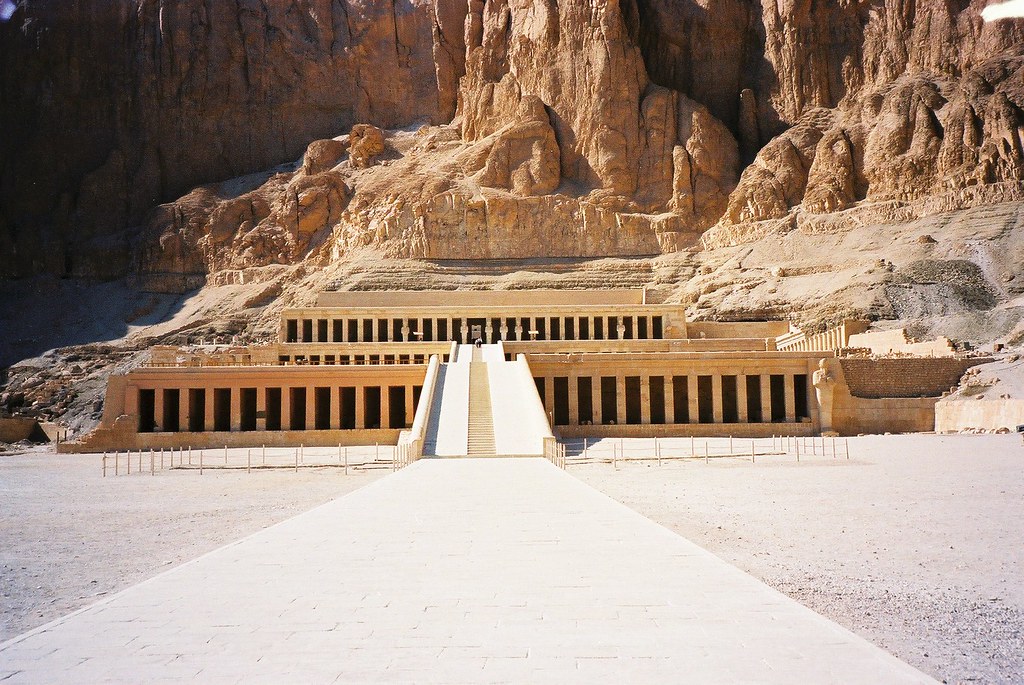
Temple of Hatshepsut, Deir alBahri, Luxor West Bank, Eg… Flickr
The second terrace facade of the Hatshepsut temple, decorated with Osirian colossi with the effigy of the queen. Wikimedia, CC. One of the features of the mortuary temple that projects Hatshepsut's greatness is a famous colonnade known as the 'Punt colonnade', located on the left side of the ramp to the third level. The colonnade narrates one of Hatshepsut's greatest achievements.

An UNESCO World Heritage Site in Second Life Kemet in Secondlife
Browse 3,160 dayr al bahri photos and images available, or start a new search to explore more photos and images. Browse Getty Images' premium collection of high-quality, authentic Dayr Al Bahri stock photos, royalty-free images, and pictures. Dayr Al Bahri stock photos are available in a variety of sizes and formats to fit your needs.

Egypt. Dayr Albahri. Valley Photograph by Everett Fine Art America
The Cache of Deir el-Bahri. Crossing the mountain range that is the southern limit of the valley of Deir el-Bahri, one would find oneself near a rocky precipice, practically invisible from afar, which originally housed the tomb, made in the form of a shaft, of the royal bride Inhapis (TT320); it became famous under the name of the "cache of.
Hatshepsut's Temple at Deir elBahri
Other articles where temple of Hatshepsut is discussed: Dayr al-Baḥrī:.the terraced temple of Queen Hatshepsut (built c. 1470 bce), was uncovered (1894-96) beneath the monastery ruins and subsequently underwent partial restoration. A fuller restoration of the third terrace, sanctuary, and retaining wall was started in 1968 by a Polish archaeological mission, which also found a third.